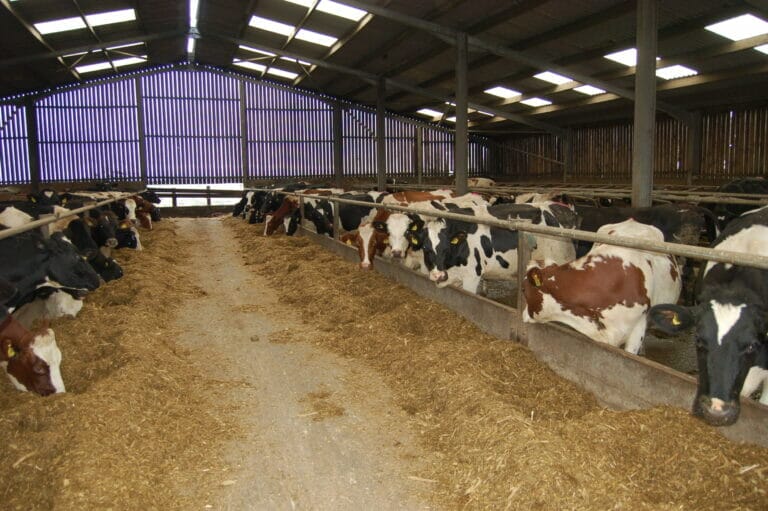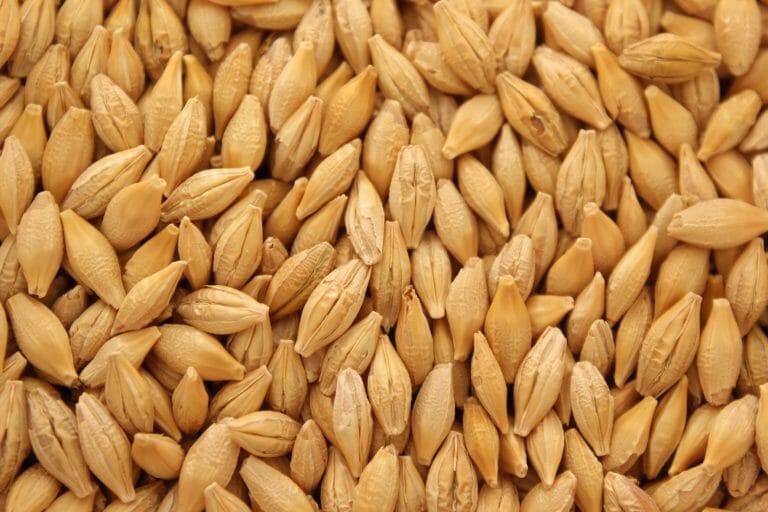
Hard feed wheats account for more than half of the UK winter wheat market, and will undoubtedly feature heavily again in many cropping plans this autumn, as growers look to bounce back from the rain-hit 2023/24 season.
Winter wheat remains the highest gross margin crop on most arable farms, with yield still regarded as being ‘king’ for maximising returns. But, achieving high yields when faced with more extreme and unpredictable weather, alongside the many other agronomic challenges, requires varieties with strong agronomics and proven, consistent, performance across multiple seasons, says Limagrain UK.
“Farmers are increasingly looking for security on-farm,” says the firm’s arable technical manager, Ron Granger. “You need a variety that delivers the right agronomics, as well as high yield.”
It is something Limagrain UK is providing, with a range of exciting new hard wheat varieties coming through its UK breeding programme, including LG Typhoon (launched two years ago), newcomer this year, LG Beowulf, and 2024 RL Candidate variety, LG Rebellion.
Genetic gains
These varieties, and two others currently in National List trials that will hopefully progress as Candidates for 2025, are the latest results of several years of ongoing breeding development, says Limagrain UK wheat breeder, Phil Tailby.
“When the UK market started shifting towards hard wheats several years ago, it took a few years for breeding programmes to adapt and new hard wheat varieties to come through. But, by using powerful breeding tools, such as marker-assisted and genomic selection, we have been able to increase selection intensity, improve selection accuracy, and reduce the time needed to develop the next generation.
“This ultimately drives faster varietal improvements, delivering the traits that growers want and need in modern wheat varieties.”
LG Typhoon for example, has an excellent disease resistance profile, especially for yellow rust (rated 9) and Septoria tritici (7.2), plus it has orange wheat blossom midge (OWBM) resistance, good specific weight, and a slow, prostrate growth habit that suits both early sowing and wide-row, direct drilling situations.
“It joined the Recommended List in 2022 with a range of agronomic attributes that are beneficial to farmers,” says Mr Granger. “These characteristics have seen it deliver excellent consistency across different seasons and regions, and suitability for the on-farm placement we have advised.”
LG Typhoon’s suitability for early drilling could be particularly pertinent this year, given the likely desire by growers to avoid a repeat of last autumn, when many drilling plans were halted by heavy rain during October onwards, he notes.
Newcomer LG Beowulf takes genetic gains on a stage further, building on its strong Costello x Gleam parentage, Mr Granger continues.
It delivers a range of desirable agronomic characteristics that make it the highest yielding variety on the RL, with proven performance across a range of situations, soil types and regions, including the North. LG Beowulf has a strong disease profile, rated 9 for yellow rust, and 6.7 for Septoria tritici, stiff straw, strong tillering, OWBM resistance, and good grain quality, particularly specific weight.
LG Beowulf has also inherited Gleam’s robustness and ability to be sown into a wide range of drilling dates and still deliver on yield, he adds.
RL Candidate variety for 2024, LG Rebellion, offers similarly impressive performance, capitalising on its KWS Extase parentage to give very high untreated yields, and an excellent disease resistance profile (notably against yellow rust and Septoria), with the additional genetics of Pch1 eyespot resistance.
LG Rebellion is also earlier maturing than KWS Extase and, unusually for a hard Group 4 variety, it has ukp export potential thanks to its excellent grain quality.
“It ticks many different boxes and gives growers the option of going for something that’s a bit different to other hard feed wheats on the market,” says Mr Granger.
Market insight

David Brown
Hard Group 4 wheats are estimated to account for around 54% of the UK wheat area, based on seed sales and farm-saved seed data, according to Openfield’s David Brown, who believes it will remain a key sector for UK growers.
While many hard Group 4 wheats go into animal feed production, in some years, there is a potential milling premium available – typically worth £2-5/t over the feed price – for crops of sufficient quality to be blended into the grist with other high-protein grade varieties, he says.
Milling demand and specifications for hard wheats do vary season-by-season, but users typically require 10.7% protein, 180 Hagberg, and 74 kg/hl specific weight, although these thresholds can be down to 10.2%, 130 and 74 kg/hl, depending on the season and overall crop quality, he says.
“Milling demand and hard wheat specifications are usually made in September, once millers know the quality profile for EU and UK crops.
“The UK is currently trading at import parity for full-spec Group 1 milling wheat and if millers continue to import, we could see more opportunity for UK hard wheat going into the grist.”
Much will depend on the size and quality of crops in the UK and elsewhere, which at the time of writing, remains uncertain given the challenging weather across much of Europe, Mr Brown says.
“With a reduced wheat area in the ground for this harvest – estimated at around 1.4 million ha – a much lower UK crop is widely anticipated, although estimates vary as to how much it will be down. The crop in the ground to be harvested in August 2024 could be between 9 and 11 million tonnes, which is comparable with 2020, and to put this into context, crop 2022 was 15.5 million tonnes and crop 2023 is circa 14 million tonnes,” he says.
Potentially, that could help support markets, but with a lower crop, the UK will be more reliant on imports, which is therefore likely to cap domestic prices, he adds.
“The UK will continue to follow global markets. These did move slightly higher during May, but all eyes remain fixed on the new crop and how that will be impacted by the weather around the world, and other events (e.g. the wars in Ukraine and the Middle East), over the coming months.”
New LG hard wheats: key attributes
|
LG Rebellion (Candidate 2024) |
||
|
Agronomic characteristics for securing consistent yield performance over multiple seasons and regions on farm |
The highest yielding variety, offering high yield potential in all regions, including the North |
High yield potential combined with the desirable agronomic characteristics of KWS Extase |
|
Prostrate growth with high tillering capacity suits early drilling, direct-drill regen situations |
Wide drilling window and suitability for a range of situations (1st vs 2nd wheat), and differing soil types |
Agronomics suit the main October and later drilling dates on farm. Very high untreated yield (97) reflects strong all-round disease profile |
|
Excellent disease resistance (especially Septoria and yellow rust) – high untreated yield, OWBM resistance |
Excellent disease profile (especially yellow rust and Septoria), OWBM resistance, and tall, stiff straw |
Excellent disease resistance profile – similar to KWS Extase, plus Pch1 eyespot resistance |
|
+2 maturity versus Skyfall |
Similar maturity to LG Typhoon |
Earlier maturing (-2 vs Skyfall) |
|
Good specific weight |
Excellent grain quality, combining a high Hagberg and specific weight |
Excellent grain quality, plus ukp export potential |



































